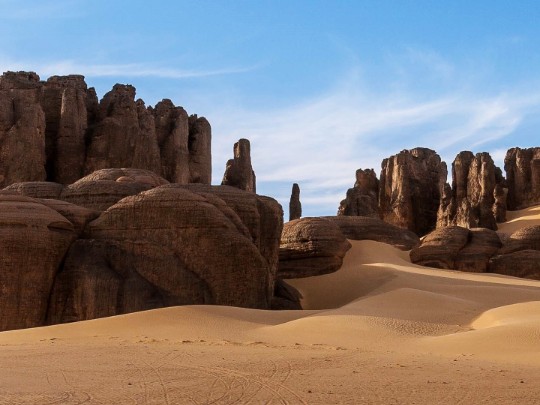Singaporeans, Did You Know? Unveiling the Amazing Yardang Landforms - Nature's Sculptures in the Desert!

When we think of deserts, images of rolling sand dunes often spring to mind. But did you know there's a whole world of fascinating geological formations hidden beneath the sands, equally as captivating? Today, we’re diving into the world of yardang landforms, a truly unique and often overlooked wonder of nature.
The name “yardang” comes from the Uyghur word meaning “gully” or “ravine,” and it perfectly describes these striking, elongated ridges and grooves you’ll find in arid landscapes. It’s a term that might be new to some of us here in Singapore, but the landscapes they create are truly something special.
Where Can You Find These Desert Sculptures?
You'll typically find yardang formations in arid and semi-arid regions – think deserts like the Taklamakan Desert in China and the Namib Desert in Namibia. These areas, characterized by low rainfall and intense sunlight, provide the perfect conditions for their formation.
The Slow and Steady Process of Creation
The creation of yardangs is a slow, patient process spanning thousands, even millions, of years. It all starts with variations in the underlying rock or sediment – some areas are harder or more resistant than others. The relentless wind, carrying abrasive sand particles, acts like a sculptor, preferentially eroding the softer areas. Over time, the tougher material is left standing, gradually forming the distinctive ridges and grooves we recognize as yardangs.
Imagine the wind constantly buffeting the landscape, slowly but surely carving away at the weaker points. This constant erosion, combined with the varying resistance of the rock, results in the incredible patterns we see. The process is a testament to the power of natural forces shaping our planet.
A Breathtaking Desert Landscape
The resulting scenery is simply breathtaking. Yardang formations can range in size from just a few meters to several kilometers long! The detail is remarkable, showcasing the intricate work of wind erosion. Each formation tells a story of the desert's history, etched into the landscape over millennia.
Why Are Yardangs Important?
Beyond their aesthetic beauty, studying yardangs provides valuable insights into past climate conditions and wind patterns. They serve as natural records, offering clues about how the desert environment has changed over time. They're a stunning display of nature’s artistry, demonstrating the enduring power of the elements in the harsh beauty of the desert. So next time you’re admiring a desert landscape in a documentary or photograph, remember the fascinating yardang formations quietly shaping the scenery!






